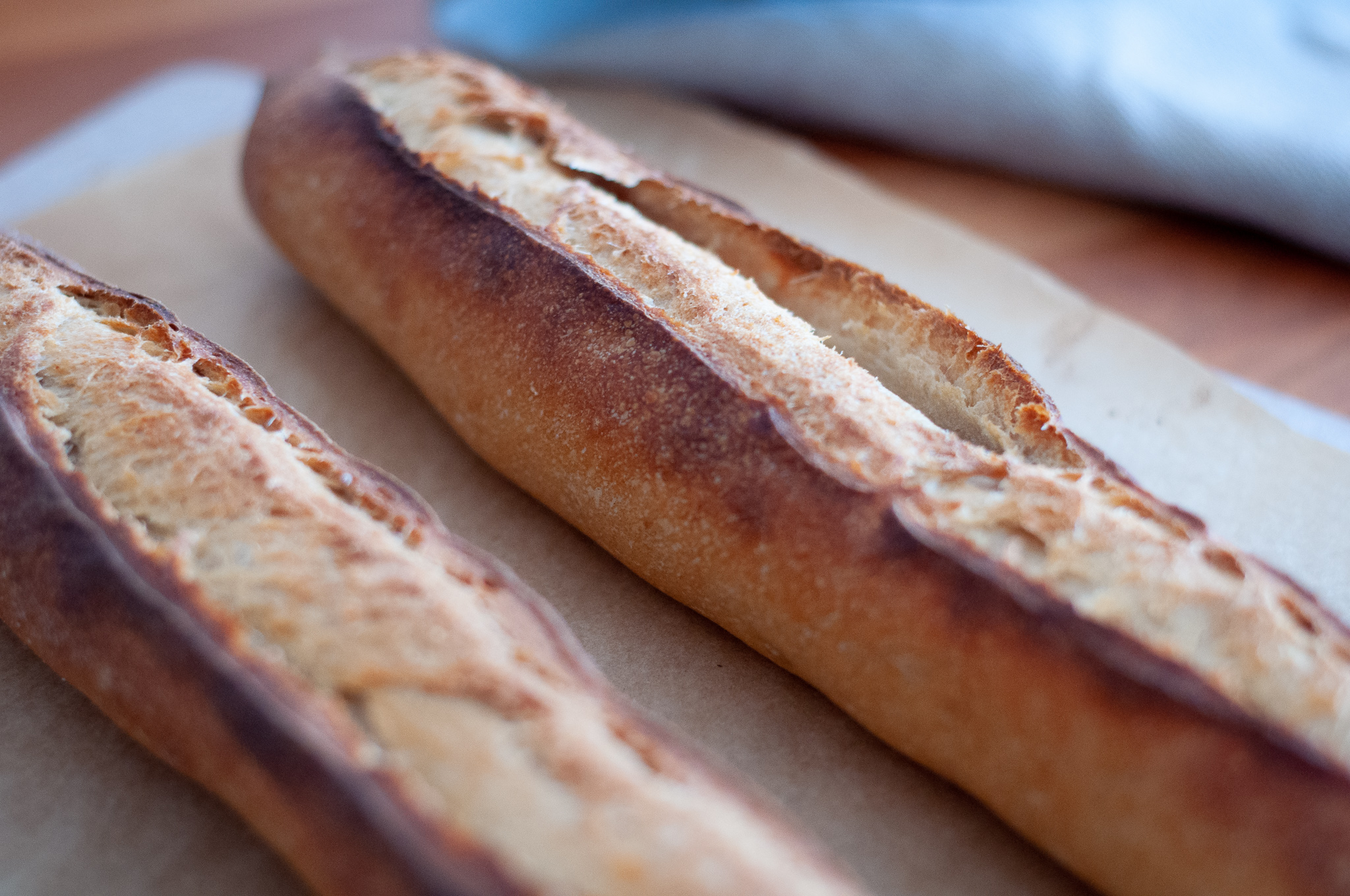While there is some pleasure to be had in baking my own bread, I’d honestly be a lot happier if I could pop into a bakery in the morning and pick up a great loaf of professionally-baked bread every day. Until I buy my second home in Paris, though, this is my go-to recipe for making baguettes at home.
One challenge is replicating the environment in a professional oven. They typically have a baking surface that’s a lot more substantial than a home baking tray. This lets them act as an energy store that blasts the dough with energy as it goes in the oven. They also have steam injectors that create a very humid environment for the bake. The crust can only form when enough water has been driven out of the surface to allow browning reactions to occur. Delaying the crust formation by preventing the surface from drying out means more time for the bread to rise and expand in the oven.

I’m a huge fan of the baking steel from a company of the same name. It’s what it says on the tin: a 7 kilo slab of steel. For the steam, I stick a standard baking tray (such as a half-sheet pan) in the oven during the preheat, and then dump boiling water onto that after sliding in the bread. If you want to go to the next level, it’s possible to get a home combi-oven (Miele makes nice ones) or something like the Anova Precision Oven.
Shaping baguettes is a pretty complicated procedure. I’ve learned everything I know watching the excellent Boulangerie Pas à Pas channel on YouTube. I’ll attempt to describe the process here in text, but you’re much better off watching his videos (even if you don’t understand what he’s saying) than trying to puzzle through with my instructions.
Special equipment
- Baking couche
- Baking stone
- Lame (razor), for scoring
Ingredients
- 150 g levain liquide
- 200 g water (at around 30 °C)
- 375 g all-purpose flour
- 5 g salt
Technique
Fit a stand mixer with its dough hook. Pour the levain and water into the stand mixer bowl. Then add the flour and salt. Mix the dough for about four minutes, until everything has come together, and then another six minutes until the dough is smooth and elastic.
Fold the dough over itself to create a smooth surface. Then tightly cover the mixing bowl to prevent the surface from drying out. Let the dough develop for a few hours at room temperature. Then, transfer it to the refrigerator to further develop for 8-12 hours.
Take the dough out of the refrigerator and let it come up to room temperature. It doesn’t need to warm up completely: around 17 °C is fine. Divide the dough into thirds (each portion will be around 240 g), and form them into small oblongs. Place those on a floured couche to relax for about 10 minutes.

At this point, preheat your oven to 250 °C (480 °F) with the baking stone and second sheet pan inside. You want everything to be extremely hot when you start baking.
Form the baguettes by taking a portion of dough and gently patting it out into a rectangle. With the longer side parallel to your body, fold the top quarter down into the center, gently pressing with your fingers to seal the dough together. Turn the dough 180 degrees, and repeat again. Then fold the two halves over each other, pressing firmly but gently to seal the shaped baguette. Gently roll the dough to even it out, and then transfer it back to the couche.




Cover the bread and let the baguettes rise for about an hour, until they’re about 20-30% bigger by volume. You’re not looking for a dramatic rise.


Then transfer those to a baking peel, score each loaf, and slide them directly onto the preheated baking stone in the oven. If you’re not using a steam or combi-oven, pour boiling water into the preheated baking tray to generate water vapor. This all needs to be done as quickly as possible.
Bake the bread for 15-25 minutes. How dark you’d like the bread is a matter of taste. For a baguette, you would be a little eccentric if it’s too light (which smacks of questionable grocery store “French” “bread”) or has the deep amber color of a classic Poilâne mîche.

Slide the bread out of the oven and let it cool, inverted, to room temperature.
